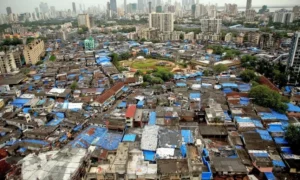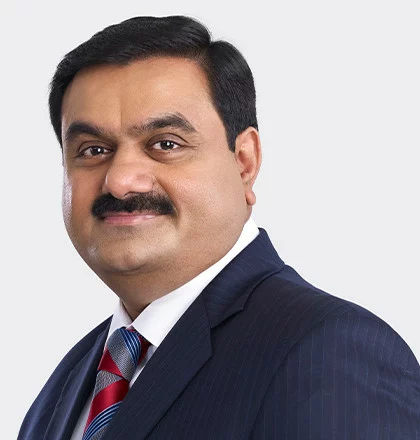 Dharavi is a residential area in North-Central Mumbai that has been acknowledged as one of the largest slums globally. Spanning an area of approximately 2.39 square kilometres, it is home to around one million people. Dharavi has an extremely high population density, with over 2.77 lakh people per square kilometre, making it one of the most densely populated regions worldwide.
Dharavi is a residential area in North-Central Mumbai that has been acknowledged as one of the largest slums globally. Spanning an area of approximately 2.39 square kilometres, it is home to around one million people. Dharavi has an extremely high population density, with over 2.77 lakh people per square kilometre, making it one of the most densely populated regions worldwide.
Dharavi boasts a thriving informal economy, with a multitude of household businesses providing employment opportunities for the slum dwellers. A wide range of products such as leather goods, textiles, and pottery are skilfully crafted within Dharavi. The annual turnover of this bustling “slum-economy” is around US $1 billion or more than ₹800 crores.
Currently, Dharavi is a slum and the cost of real estate there does not match its potential price if the land were redeveloped and turned into an upscale and swanky place full of posh residential colonies and high-tech offices. The price of real estate in and around Dharavi would then jump to approximately ₹40,000 per square foot. This means that a 1000 square feet flat would cost ₹4 crore. Just imagine the valuation of the total real estate if Dharavi was rebuilt.
No wonder, proposals to redevelop Dharavi along the lines of Singapore, Hong Kong and Dubai have been floated since the 1990s. The latest proposal that has generated great controversy is the Dharavi Redevelopment Project by Adani Realty Limited. It is owned by one of the world’s richest men, Gautam Adani, who won the bid for the Dharavi Redevelopment Project in December 2022. Adani Realty’s bid for the project amounted to ₹5,069 crores, surpassing its closest competitor, the DLF group, whose bid stood at ₹2,025 crores.
When the Government initiates the compulsory acquisition of private land parcels for developing infrastructure projects, it is obligated to provide compensation to the developers. However, the compensation offered by the Government is typically lower than the prevailing market rate. To address this issue, the concept of Transferable Development Rights (TDR) was introduced. These rights are granted to developers in the form of certificates, which can be utilized by the landowner/developer or traded for cash.
The controversy over Dharavi’s redevelopment by Adani erupted after it was reported that the Maharashtra government issued a notification to tweak changes in the Development Control Rules (DCR) for the Dharavi Redevelopment Project, which would eventually allow the use of TDR without any indexation. This would allegedly benefit the Adani Group.
Currently, the rules are with indexation. This means that under the current process, TDR can be utilized only on certain locations. For example, if 1,000 square feet of TDR is generated from a specific project (like Dharavi) in a low-priced locality, the same amount of TDR cannot be used for posh and upscale locations. For those posh areas, only a fraction of TDR was permitted. However, under the new rules, an equal quantity of TDR generated would be available for utilization in any other posh location where the cost of real estate is much higher.
Moreover, the notification by the Maharashtra government has a proviso that makes it compulsory for Mumbai-builders to buy 40% of their required TDR from Adani Realty’s Dharavi Project before utilizing the remaining TDR. This is a bonanza for the Adani Group as it allows it to charge 90% of the ready reckoner rate (standard rate fixed by the State government for property transactions) of the receiving plot as the TDR rate.
The redevelopment of Dharavi has now taken a backseat after political parties like Congress and the Shiv Sena (UBT faction) started protests against the project. Massive rallies were staged with slogans of ‘Remove Adani, Save Dharavi’. Those working under the banner of Dharavi BachaoAndolan (Save Dharavi Committee) are demanding 500 square feet of homes for residents of Dharavi. They want the redevelopment to be carried out by CIDCO (City and Industrial Development Corporation of Maharashtra Limited) or MHADA (the Maharashtra Housing and Area Development Authority), government entities that have hitherto successfully carried out the revamping of many areas of Mumbai and various cities of Maharashtra.
Speaking to Radiance, Abul Hassan, who runs an electroplating business in Dharavi, said, “Nobody knows how many square feet of land (after redevelopment) will be allocated to the residents. They (authorities) are trying their best to convince us to shift from Dharavi to an alternate location. However, that would be disastrous for our business. Our business will continue to run only in the existing location (in Dharavi). We are currently in the heart of Mumbai City. There are three railway stations near our current location. If we are sent away from the city, how can we survive? Even if we are told to relocate one and a half to two kilometers, it will pose many problems. If we get a commercial ‘gala’ (shop) in the current location, it would suffice.
“There is a possibility that we may be told that we cannot do any manufacturing/production activity (post-redevelopment). They may say that only office or trading activity is permitted. That would put an end to our business. Muslims make up at least 40% of Dharavi. Entire localities of Dharavi are full of Muslims. They are mostly engaged in businesses such as textiles, leather goods, bags, belts, etc.”
Another resident of Dharavi, Mirza Sharfuddin Baig felt that the Adani redevelopment would be good for Dharavi. Dismissing the opposition to Adani as “politics to gain votes”, he felt that the Muslim community is rallying behind those protesting against Adani as they have been frightened into believing that they will get a raw deal and will be shunted out of that area. These people do not want Dharavi to be redeveloped. Who else can develop such a large location with so many people? Adani will do it once he has decided. Nobody has approached us officially with any plan or proposal. However, politicians are busy doing their thing. They have nothing tangible to offer except oppose the project.”
The people of Dharavi are desperately in need of better amenities and a support system that will uplift them economically. The Adani redevelopment proposal needs to be examined through the prism of justice and fair play. If the laws are being twisted to benefit the powerful and influential, it must be opposed.
As Elie Wisesel once said, “There may be times when we are powerless to prevent injustice, but there must never be a time when we fail to protest.”


